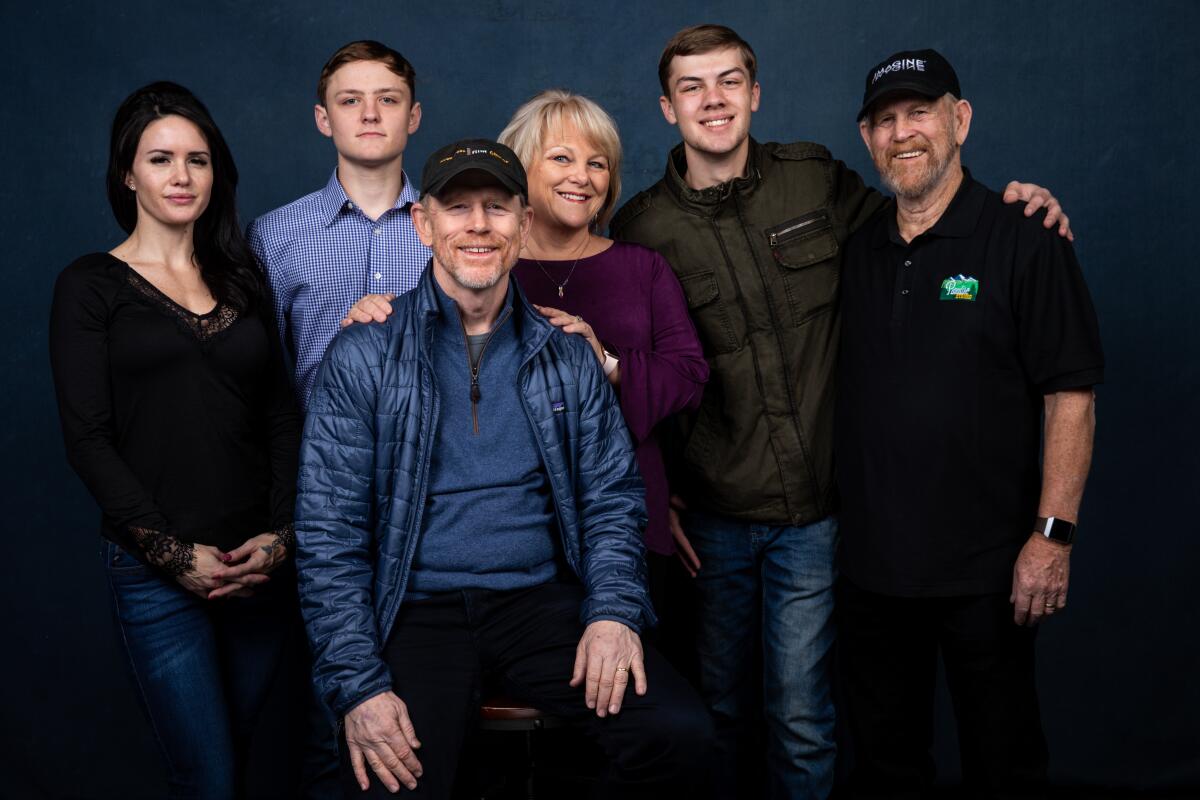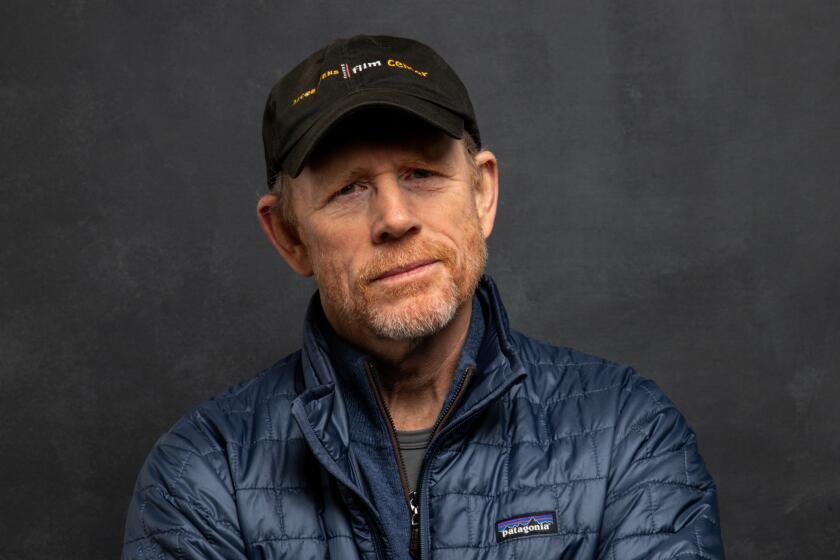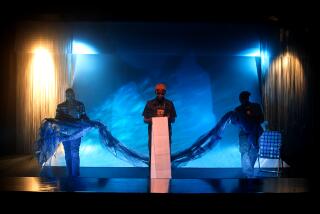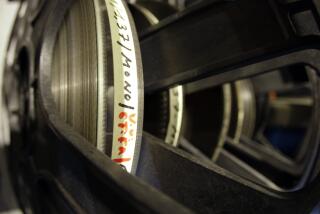How Ron Howard’s ‘Rebuilding Paradise’ reimagines releasing a movie during a pandemic
A raging firestorm on Nov. 8, 2018, engulfed the small town of Paradise, Calif., displacing some 50,000 residents and destroying 95% of local structures. The new documentary “Rebuilding Paradise,” directed by two-time Oscar winner Ron Howard, details the year that followed as the town attempts to come back from the devastation.
The film premiered this year at the Sundance Film Festival, back when things like film festivals and movie releases seemed commonplace. Now the movie and its filmmaking team are faced with the unexpected challenge of how to release a documentary in the post-COVID moment, a vastly changed landscape from the one they originally anticipated.
The strategy that emerged for “Rebuilding Paradise” was an innovation born of necessity. National Geographic, which produced the documentary, had planned to air it in November, for the second anniversary of the Camp Fire, which killed 86 people and plunged utility company PG&E into Chapter 11 bankruptcy protection. But first, it wanted to give the well-reviewed film a proper theatrical rollout.
The movie is playing in about 70 domestic markets through a hybrid approach, which includes virtual cinemas, a dozen carefully selected traditional indoor theaters, or “hard tops,” and a drive-in theater. (The Vineland Drive-In in the city of Industry is set to show the picture in its second week of release.) The film’s unveiling comes at a time when Hollywood studios continue to delay their big releases because of prolonged theater closures.
Speaking recently from his home in Connecticut, Howard noted he had himself been trying to book tickets for a local drive-in all summer, but it keeps selling out.
“Look, under these circumstances any way anybody can see anything, I appreciate it,” said Howard. “And particularly a documentary.”
To manage the release of “Rebuilding Paradise,” National Geographic and Imagine Entertainment (the company Howard co-founded with producer Brian Grazer) brought in Pleasantville, N.Y.-based distributor Abramorama. The firm traffics mainly in special-event releases for documentaries and particularly music films. Abramorama previously worked with Ron Howard to release his 2016 documentary, “The Beatles: Eight Days A Week — The Touring Years.”
“Under different circumstances, this would have been a robust national release in theaters. The film deserves that,” said Abramorama founder and CEO Richard Abramowitz.
“A film like this traditionally would have gotten the widest release possible and then played on National Geographic and then eventually through Disney onto their streaming platform,” said Justin Wilkes, president of Imagine Documentaries and a producer on the film. “So our mission here was, let’s offer this. Essentially any theater, any theater chain that wanted it. And it’s been sort of on a literally day-by-day basis, checking in with those theaters to see who has the ability to show it in a physical form and then others that are going to show it virtually.”
Drive-ins had no big-budget movies to show. Indie film distributors had no indoor theaters to screen in. How necessity, and a pandemic, brought them together.
Most cinemas, such as Los Angeles-based chain Laemmle Theatres, can’t show the film on the big screen because of restrictions due to the coronavirus outbreak. Instead, the seven-location exhibitor must release the film through “virtual cinema” screenings, an innovation to help keep art houses afloat during a period when they can’t operate. With virtual cinema, patrons can rent a digital version of a new film from their local theater’s website to watch at home. The movies usually cost $10 to $12 to rent for three days.
Laemmle Theatres, which specializes in indie films and foreign movies, has hosted about 160 films online since the pandemic started. However, it’s not a huge source of income.
“It’s some revenue, which is better than none,” said president Greg Laemmle. “For exhibitors, it’s basically a stopgap until we reopen.”
Still, he’s happy to have new movies from distributors, which allows the company to maintain relationships with its customers even when they can’t show films on the big screen. Distributors want to help smaller cinemas survive so they have someplace to show their movies when the public health crisis ends.
“Right now, we need the product they’re releasing to generate some revenue and stay in the game with our patrons,” Laemmle said. “And on the other end of this, they’re going to need us as theatrical partners.”
The National Geographic documentary follows several individuals trying to salvage their historic Northern California town in the wake of disaster.
As they prepared to release “Rebuilding Paradise,” the filmmakers were heartened by the movie’s July 12 “virtual premiere,” which drew some 6,000 viewers, including first responders.
“Believe me, we agonized over this decision over the summer,” said Carolyn Bernstein, EVP of global scripted content and documentary films at National Geographic. “It deserves to be seen on the big screen, but it also has a timely message. We didn’t want to delay the release of this movie. It’s not a perfect solution, but it’s the right solution.”
Since the film’s premiere, the filmmakers have seen circumstances change the meaning of the film.
“When we started this movie, it really was a climate change movie,” said Wilkes. “If we don’t listen to what the Earth is going through right now and we don’t take precautions, Paradise could just as easily happen anywhere else.”
“It really did become a story of human resilience,” said Wilkes. “Over the course of that first year, it went from being ‘This is a climate story’ to ‘Wow, this is really a story of humanity and community.’ When COVID hit it took on a whole new level of meaning because then we were looking at it as ‘we’ve all just gone through something that’s been catastrophic, in different ways.’”
“To me it broadens itself as a kind of case study in coping with these drastic, shocking changes,” said Howard. “Everything is so fluid and shifting right now. And I think that what the documentary offers is insight into what people undergoing that kind of really acute, cruel test — what that looks like. And it’s not just about the hours of trying to save your life or save the lives of your loved ones. It’s this long tail of struggle and upheaval.”

For Howard, the film also marked his first foray into a more traditional verité style of documentary filmmaking, after his concert doc “Made In America” and the archival films “Eight Days a Week” and “Pavarotti.” He was in production on “Rebuilding Paradise” at the same time he was shooting his fiction feature “Hillbilly Elegy,” so he was checking in frequently with the documentary’s producers on the ground and viewing footage via online links. He was also in post-production on both films at the same time, shuttling between separate editing rooms in Manhattan.
“Hillbilly Elegy” is being released by Netflix, and while Howard said that a limited theatrical release for that film later in the year had long been planned — similar to the streaming service’s treatment of other prestige awards season titles such as “Marriage Story” and “The Irishman” — no dates have been finalized.
With the sweeping vistas of its forestland setting, “Rebuilding Paradise” features visuals that lend themselves to the big-screen experience. The opening minutes of the movie use harrowing dash-cam and phone camera footage to re-create the personal horror of Paradise residents fleeing their burning town.
Howard, who directed the 1991 firefighter drama “Backdraft,” said of the opening sequence depicting the fire itself, “I’ve worked with great artists on scenes that were meant to be powerful and visceral, but I’ve never been involved with anything as emotionally intense as that.”
Oscar-winning filmmaker Ron Howard has made his most personal documentary yet with “Rebuilding Paradise” and landed his first slot at the Sundance Film Festival.
The unexpected release plan for the documentary ultimately underscores the commitment of National Geographic and the filmmaking team to both the project and people of Paradise, wanting to get their story out into the world.
Imagine Documentaries’ Wilkes pointed to the recent box office success for docs such as “Free Solo,” “Won’t You Be My Neighbor” and “RBG” alongside the massive popularity of streaming and cable documentary series such as “Tiger King” and “The Last Dance.” Taken together, they show the appetite of audiences for quality offerings wherever they can find them.
“This isn’t just true for docs. I think this is kind of across the whole industry right now. COVID has only accelerated so many of the trends that were already starting to take hold,” said Wilkes.
According to Comscore, more than 1,000 movie theaters are open around the country, though the biggest chains, including AMC Theatres and Regal, are waiting to open until studios begin releasing their big films, including Warner Bros.’ “Tenet” and Walt Disney Co.’s “Mulan.” But Abramowitz said he wanted to be cautious in releasing “Rebuilding Paradise,” speaking with individual theaters to make sure they were taking the necessary precautions.
“If I could go to every theater at every show and make sure people were properly spaced, I would,” Abramowitz said. “At the risk of sounding glib, this is a terrifically timely and powerful film, but it’s not worth dying for.”
More to Read
Only good movies
Get the Indie Focus newsletter, Mark Olsen's weekly guide to the world of cinema.
You may occasionally receive promotional content from the Los Angeles Times.













